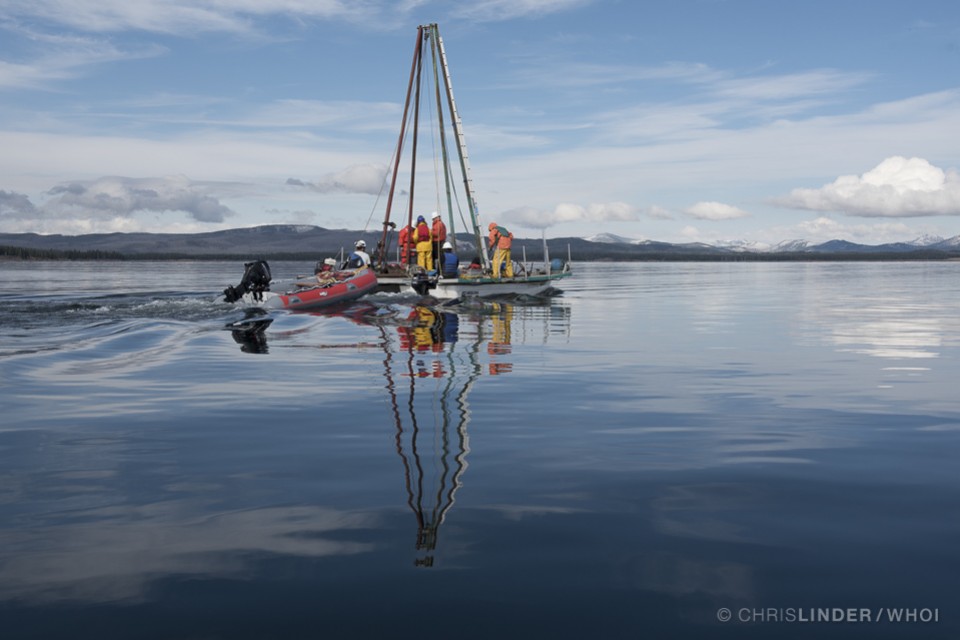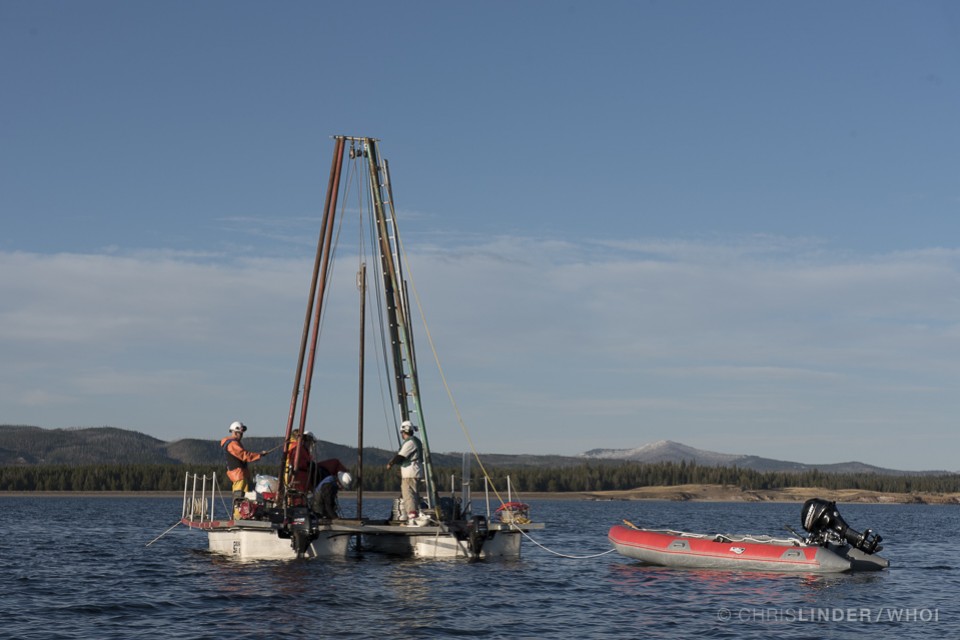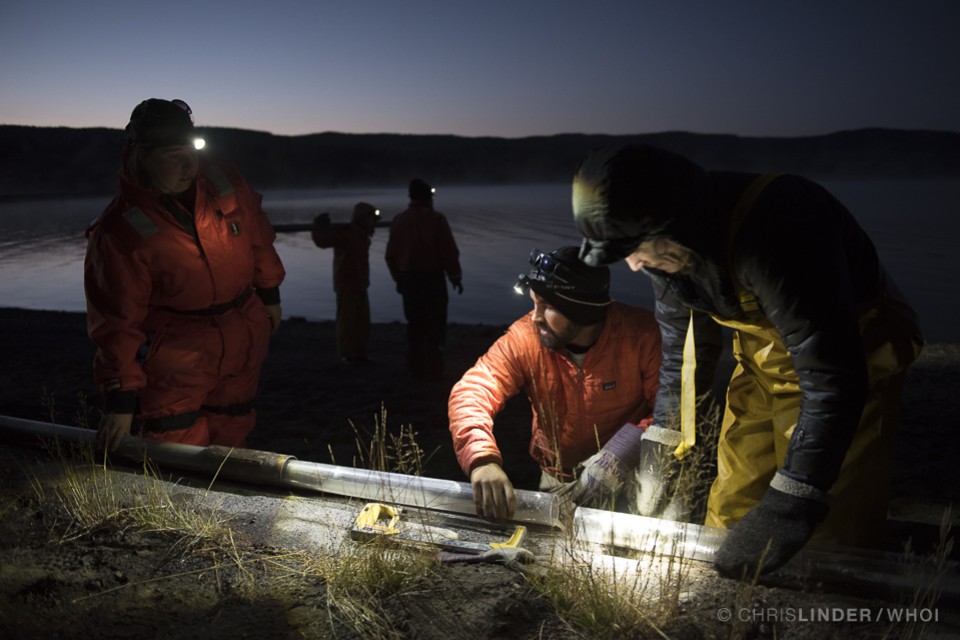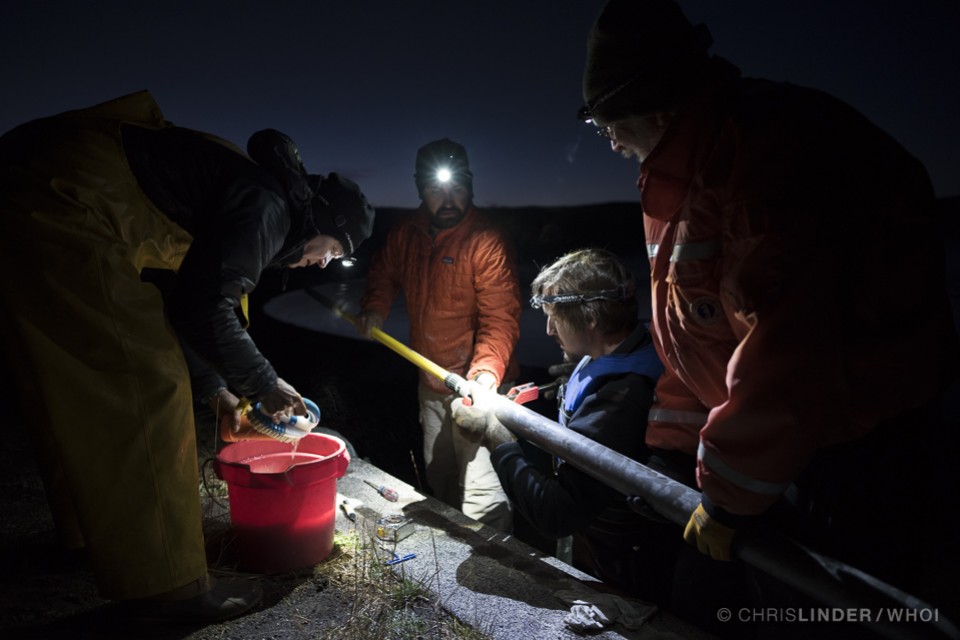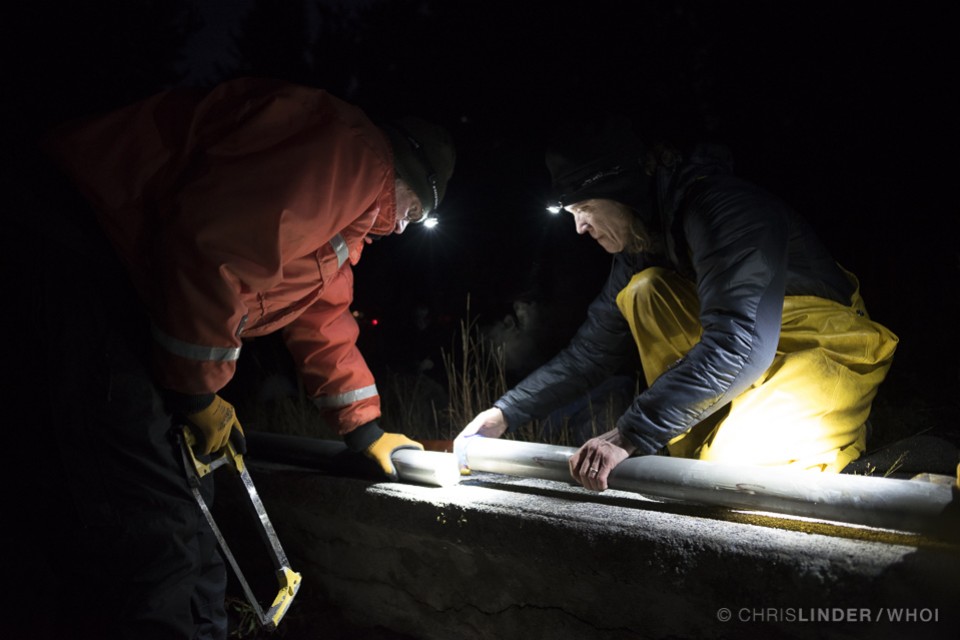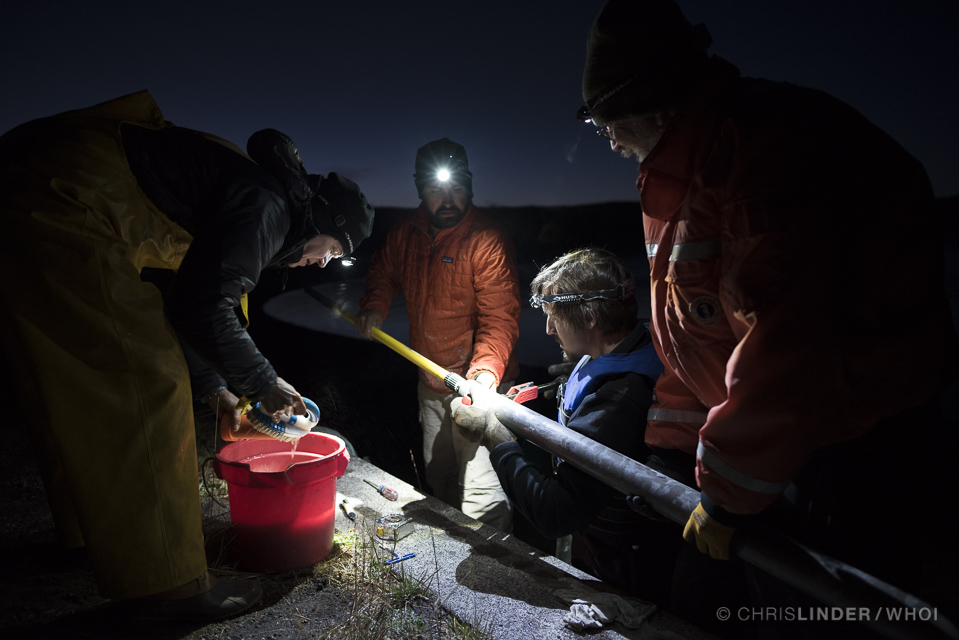After spending the morning finishing the construction of the coring vessel, the team was eager to get out and collect their first core. Normally in the afternoon you can expect some winds to build over the lake, but today to our surprise it was flat calm. The coring team took advantage of the lull in the weather and headed to their first site of six.
Even though all of the sites are within Yellowstone Lake, each one is in a different geologic area, including a deep ‘graben’ (a ditch in between two faults), a large hydrothermal explosion crater, the deep, hydrothermally active hole east of Stevenson Island, and areas of landslide deposits. The cores from these different sites will give the team an unprecedented look at the post-glacial geological history of the lake region, including the processes by which large hydrothermal explosion craters were formed.
Photos by Chris Linder, WHOI. Work was completed under an authorized Yellowstone Research Permit.
You couldn't ask for a nicer September afternoon on Yellowstone Lake. The coring vessel motors to site number one. Work was completed under an authorized Yellowstone Research Permit.
The coring team (from left, Pat Shanks, Sheri Fritz, Sabrina Brown, and Chris Schiller) uses lines to support the long coring tube while Mark Shapley (right) prepares to hoist it upright with a winch. Work was completed under an authorized Yellowstone Research Permit.
Once the core barrel is upright, it is loaded with weights and lowered into the bottom of the lake. Work was completed under an authorized Yellowstone Research Permit.
To bring the core back on deck, the procedure is repeated—but this time in reverse order. It takes all six people working on the coring vessel to move the long core barrels into position. Work was completed under an authorized Yellowstone Research Permit.
After successfully collecting the first core, the team raced the setting sun back to Gull Point. There were still hours of work remaining—the team had to safely remove the precious sediment cores from the barrels and store them for future analysis. Ryan O'Grady takes notes while Sabrina Brown measures a short piece of core. Work was completed under an authorized Yellowstone Research Permit.
The team works by headlamp to extract and label the cores. Work was completed under an authorized Yellowstone Research Permit.
The cores are cut into manageable sizes for transportation back to the National Lacustrine Core Facility in Minnesota, where they will be stored for future analysis. Work was completed under an authorized Yellowstone Research Permit.
Pat Shanks (left) and Sheri Fritz cap a piece of the deep graben core. By the time they finished, it was completely dark. Work was completed under an authorized Yellowstone Research Permit.
